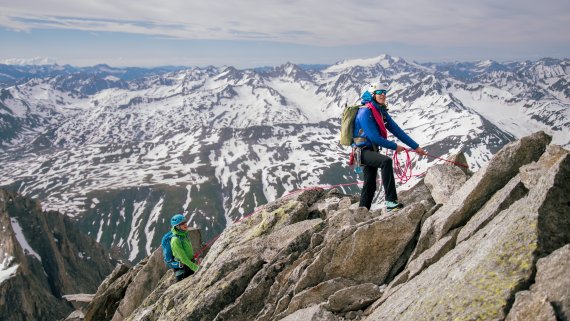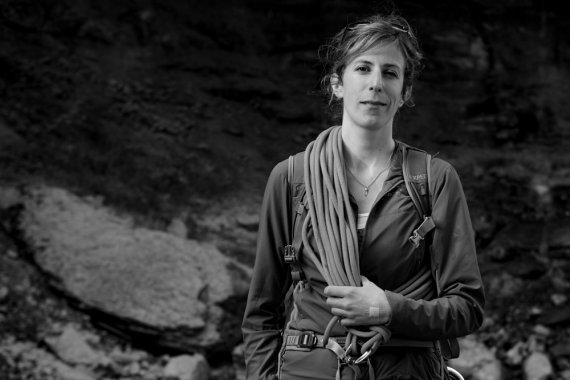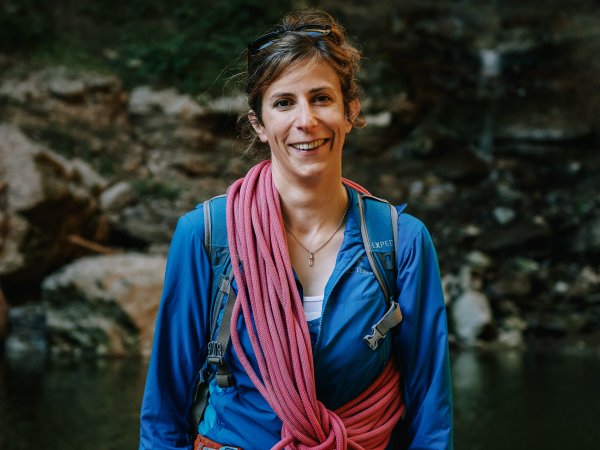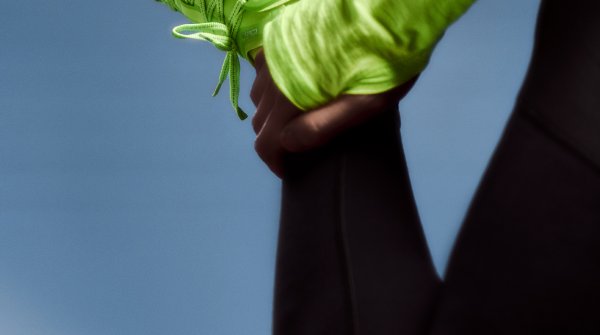OutDoor Society: There are currently around 1250 active mountain guides in Switzerland - including only 39 women. Why is that?
Ariane Stäubli: The clubs and associations have a very strong tradition. There is a lot of talk about first ascents and the first mountain guides and at festivities everyone dresses accordingly in the traditional gulf of the first climbers. Many role models are male, and mountaineering thrives on these heroic stories. In addition, the mountain guide training is strongly focused on the technical, physical part, which deter some women. The profession of a mountain guide also has a lot to do with "leading a person". This part is not emphasized enough.
There is often talk of "conquering a mountain" or "storming a summit". Are the alpinism narratives perhaps also a deterrent for women?
That, too. And many women still don't dare to lead today - not because they can't, but simply because they weren't educated to lead. Women are expected to be sensitive, helpful and gentle. The fact that the "leading" is still male dominated, I noticed only late. As a young person I was always on the road with my group - practically just boys - but I was accepted and integrated there. I wasn't talking about being a woman. It wasn't until I took on the leadership role that I became aware of it: Wow, there's hardly anyone else who's female.
Did you ever have the feeling that you as a woman had to "stand your ground" even more in order to be accepted among your male mountain guide colleagues?
No, I haven't been given any special assignments. With the right technique and mental strength, you can absorb many physical weaknesses. Moreover, one knows and appreciates one another among fellow mountain guides, which is like a small family. Nevertheless, the fact is that mountain guide training is a system that was made by and for men - men take the exams, set the limits, and as a woman you have to play by the rules of this man-made system. There isn't a single woman in the entire field of experts yet.
You also needed mental strength during your training as a mountain guide...
I crashed 500 meters of altitude on a ski tour. Miraculously, I survived, but my knee was completely broken, all the ligaments torn. The doctors said I could be happy if I could ever walk without crutches again. But there was no alternative for me, no plan B. I knew I had to get through. And after a year, I was back on skis. If something makes you as happy as mountaineering makes me, then you can't just disconnect it and say, "I'm leaving it."

Do you notice different behaviour patterns of women and men in extreme situations?
Less in extreme situations than in normal interactions. This is where these learned behaviors come to light again: women tend to follow, the man is usually the first on the rope and climbs up. There are also hardly any pure women's rope teams at the 4000s. But in the end, humility and amazement at the fascinating mountain world capture everyone equally.
Is humility an important quality?
Absolutely. The mountain keeps holding a mirror up to me: Sometimes I have to admit to myself that I am in the wrong place at the wrong time, that the weather is not right or that I am not technically up to the task. Sometimes I think it's really nice when something bigger tells me: "Up to here and no further". People become very small in the mountains, which creates a lot of space for other things. Learning to reverse, however, is one of the most difficult exercises. Only with time did I learn that a day on which I have to turn back is also a beautiful day and that the summit then moves into the background. When you are young and ambitious, only the summit counts, not the way there.

Were there guests who were surprised at the first moment when you introduced yourself as a mountain guide?
There are funny situations sometimes: Once I received a guest at the station, and he dropped his jaw: "What? You're only half as heavy as me, how can that work?" He was afraid that I wouldn't be able to hold him. I took that with humor and convinced him with calm and professional competence that there were enough safety possibilities on the mountain. I simply don't correspond to the image that most guests have of the classic mountain guide: You imagine a tall, strong, stocky man with a beard. Of course, this is also a matter of getting used to, many have never been confronted with a woman as a mountain guide before. I find it important and exciting to break open and change these images.

 Sports BusinessSki Mountaineering Goes Olympic: What Milano-Cortina 2026 Means
Sports BusinessSki Mountaineering Goes Olympic: What Milano-Cortina 2026 Means
- ISPO awards
- Mountain sports
- Bike
- Design
- Retail
- Fitness
- Health
- ISPO Job Market
- ISPO Munich
- ISPO Shanghai
- Running
- Brands
- Sustainability
- Olympia
- OutDoor
- Promotion
- Sports Business
- ISPO Textrends
- Triathlon
- Water sports
- Winter sports
- eSports
- SportsTech
- OutDoor by ISPO
- Heroes
- Transformation
- Sport Fashion
- Urban Culture
- Challenges of a CEO
- Trade fairs
- Sports
- Find the Balance
- Product reviews
- Newsletter Exclusive Area
- Magazine


